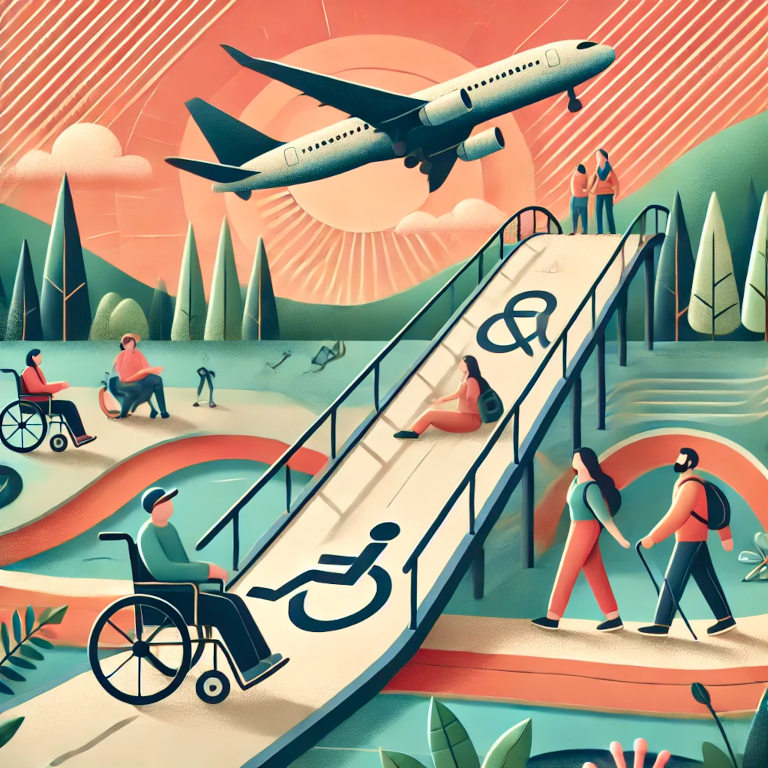Accessible travel ensures that people of all abilities can explore the world with ease and comfort. This approach to travel focuses on creating inclusive experiences by addressing the needs of individuals with disabilities, making it possible for everyone to enjoy the wonders of travel. As an expert in Travel, this article will delve into the concept of accessible travel, its importance, and practical tips for planning inclusive trips.
Understanding Accessible Travel
Accessible travel, also known as inclusive travel, involves making travel experiences available to individuals with disabilities. This includes providing accommodations, transportation, and attractions that are designed to be accessible and accommodating to people with mobility, sensory, or cognitive impairments. The goal is to eliminate barriers and create a seamless travel experience for all.
Importance of Accessible Travel
1. Promotes Inclusivity
Accessible travel promotes inclusivity by ensuring that everyone, regardless of their abilities, has the opportunity to experience the joy and enrichment of travel. It fosters a culture of acceptance and respect, highlighting the importance of diversity in travel.
2. Enhances Quality of Life
Travel can significantly enhance the quality of life by providing new experiences, reducing stress, and promoting mental well-being. For individuals with disabilities, accessible travel can be particularly empowering, offering a sense of independence and adventure.
3. Expands Tourism Market
By catering to the needs of travelers with disabilities, the tourism industry can tap into a larger market. This not only boosts business but also encourages the development of more accessible infrastructure and services, benefiting all travelers.
Key Elements of Accessible Travel
1. Accessible Accommodations
When planning accessible travel, choosing the right accommodations is crucial. Look for hotels and vacation rentals that offer:
- Wheelchair Accessibility: Ensure that the property has ramps, wide doorways, and accessible bathrooms with grab bars and roll-in showers.
- Visual and Hearing Accessibility: Accommodations should provide features like visual alarms, captioned TV programs, and TTY devices for guests with hearing impairments.
- Service Animal-Friendly: Properties should welcome service animals and provide information on nearby relief areas.
2. Transportation Options
Accessible transportation is key to a smooth travel experience. Consider the following:
- Air Travel: Airlines should offer assistance with boarding, accessible seating, and storage for mobility devices. Pre-notify the airline of any special requirements.
- Public Transit: Research the availability of accessible buses, trains, and subways. Look for stations with elevators and vehicles with low floors and designated seating.
- Rental Cars: Many rental agencies offer vehicles with hand controls or wheelchair ramps. Confirm availability in advance.
3. Attractions and Activities
Ensure that attractions and activities are accessible and enjoyable for everyone:
- Museums and Cultural Sites: Look for venues with accessible entrances, elevators, and audio guides or Braille descriptions for visitors with visual impairments.
- Outdoor Adventures: Many parks and nature reserves offer accessible trails, viewing platforms, and adaptive equipment for activities like kayaking or skiing.
- Restaurants and Shops: Choose establishments with wheelchair access, accessible restrooms, and menus available in large print or Braille.
Planning an Accessible Trip
1. Research and Preparation
Thorough research is essential for accessible travel. Utilize resources like accessible travel guides, online forums, and travel agencies specializing in inclusive travel to gather information and tips.
- Travel Guides: Look for guides that specifically focus on accessible travel and provide detailed information on destinations and services.
- Online Communities: Join forums and social media groups where travelers share experiences and recommendations.
- Specialized Agencies: Consider using travel agencies that specialize in accessible travel to help plan your trip.
2. Booking and Communication
When booking accommodations, transportation, and activities, clearly communicate your needs to ensure they can be met.
- Detail Requirements: Provide detailed information about mobility aids, service animals, or any other specific needs.
- Confirm Arrangements: Follow up with service providers to confirm that accommodations will be in place upon arrival.
3. Pack Smart
Pack essential items that will help make your trip more comfortable and enjoyable.
- Medical Supplies: Bring all necessary medications, medical supplies, and prescriptions.
- Accessibility Aids: Pack any mobility aids, hearing devices, or visual aids you use regularly.
- Documentation: Carry documentation related to your disability and any special requirements, including letters from healthcare providers if necessary.
Summary
Accessible travel is about creating inclusive and enjoyable experiences for all individuals, regardless of their abilities. By focusing on accessible accommodations, transportation, and attractions, and by thoroughly planning and communicating your needs, you can ensure a seamless and enriching travel experience. Embracing accessible travel not only enhances personal well-being but also promotes a more inclusive and diverse tourism industry.






